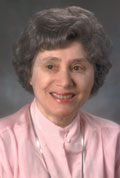Two major recommendations of the NIH Enhancing Peer Review Initiative were to shorten grant applications and restructure their content. These changes will affect applications due on or after January 25, 2010.
Here’s a brief overview of the changes and their implementation. Be sure to follow the links for other details and important information.
New Application Structure and Length
These changes affect ALL applications (new, renewal, resubmission and revision). Exceptions will be considered only for AIDS applications from members of review committees. Specifics vary with the type of application (research, training, resource, etc.). For more, see:
- NIH Guide notice
- Details of application changes
- Table of page limits
- Links to more information for applicants and reviewers
Implementation
- When submitting an application due on or after January 25, you must download the new application forms. You may sign up to be notified when new application packages become available, which will be in December.
- Applications submitted early must follow the instructions for the actual due date (e.g., applications submitted on January 24 for the February 5 R01 due date must use the new forms).
- You can begin working on your applications now and paste the text into the appropriate form when it’s available.
- NIH will not accept any applications using any part of the old forms, including biosketches.
- All existing Funding Opportunity Announcements (both electronic and paper) will be revised to incorporate these changes and will be reissued by December 2009.
- Parent announcements will be reissued and have new Funding Opportunity Announcement numbers.
If you have specific questions, please contact the NIH Grants Information Help Desk at grantsinfo@nih.gov.


 for their “studies of the structure and function of the ribosome.”
for their “studies of the structure and function of the ribosome.” We were all very sad to learn of the death of Ruth Kirschstein, M.D., last evening. She will be deeply missed here at NIGMS, NIH, and beyond.
We were all very sad to learn of the death of Ruth Kirschstein, M.D., last evening. She will be deeply missed here at NIGMS, NIH, and beyond.